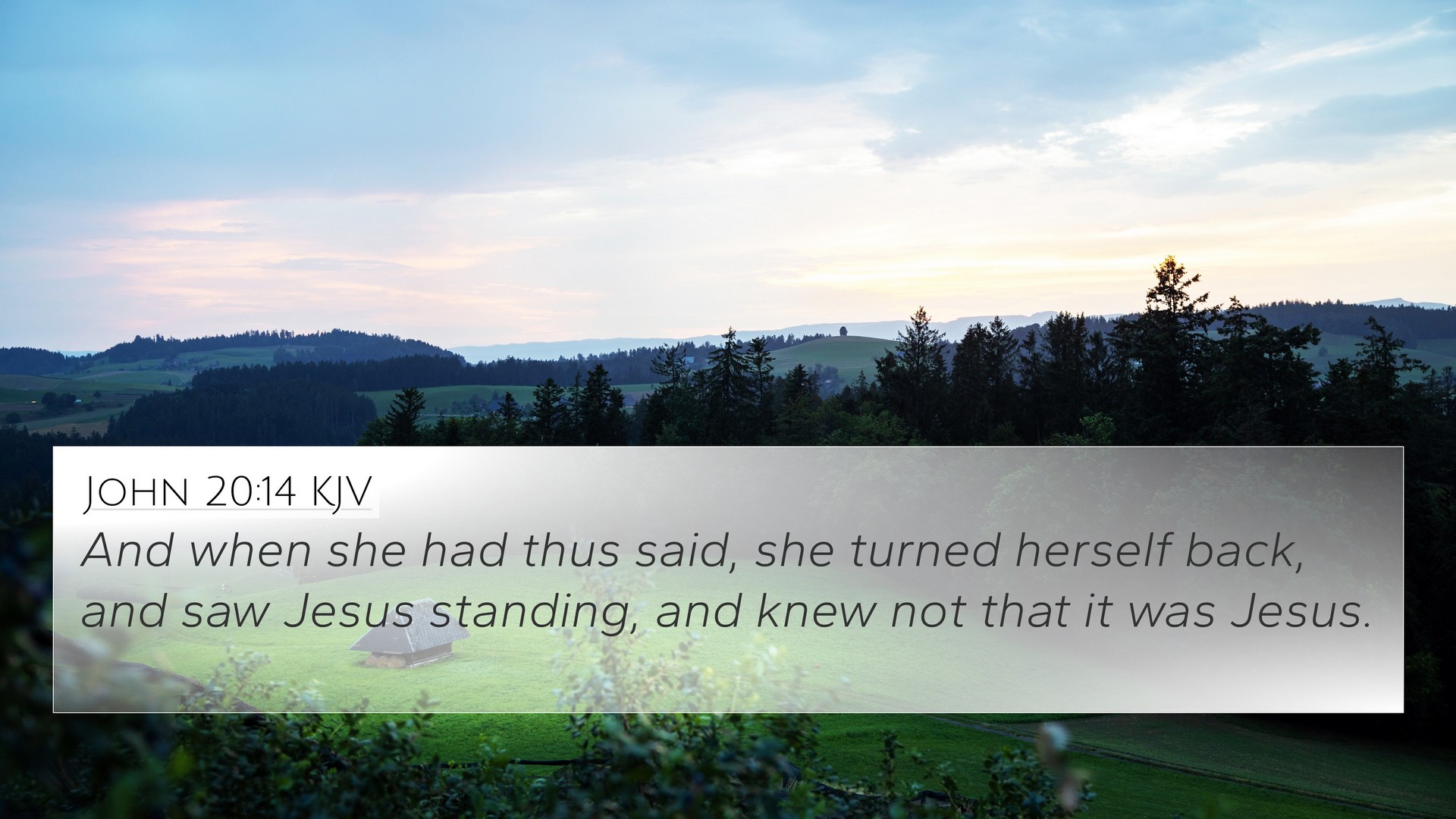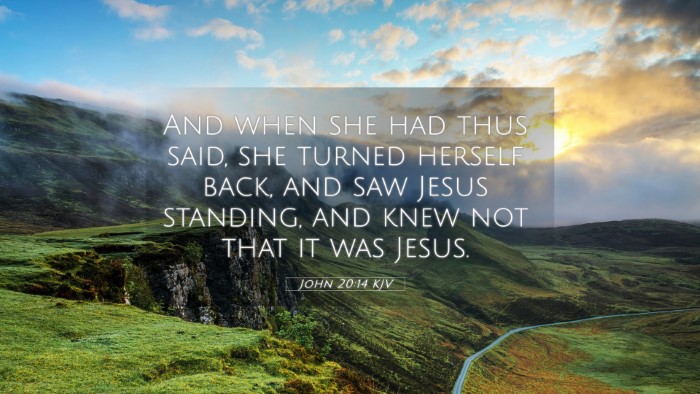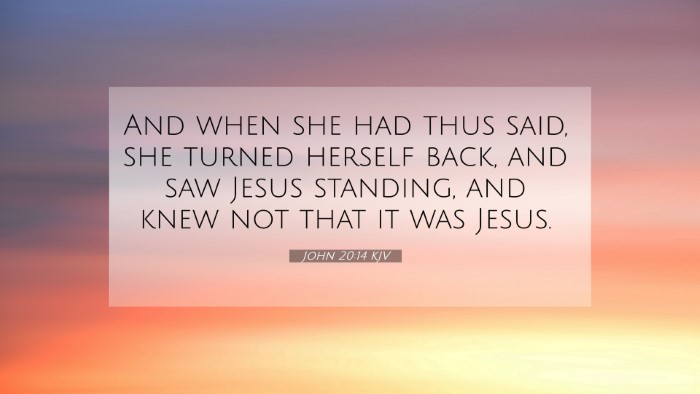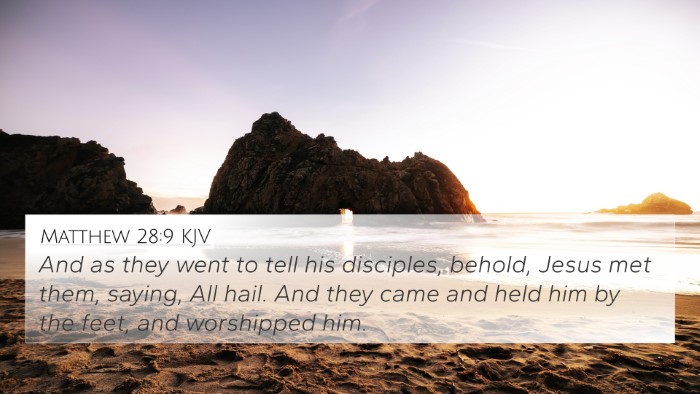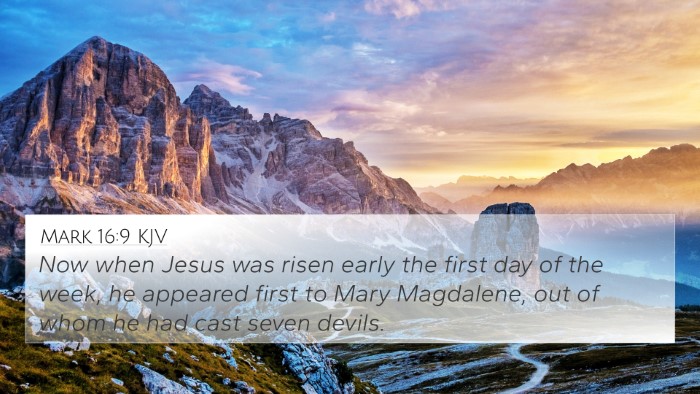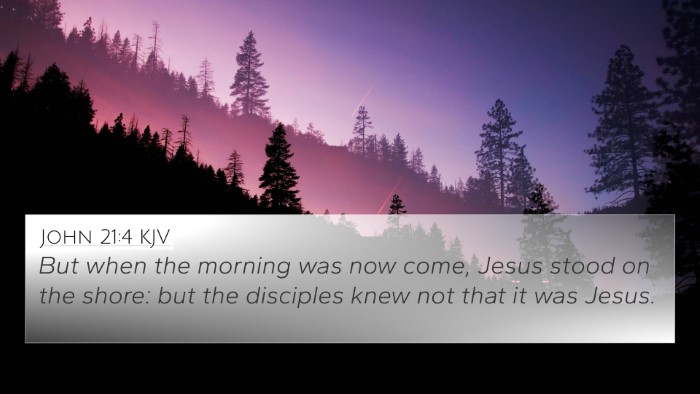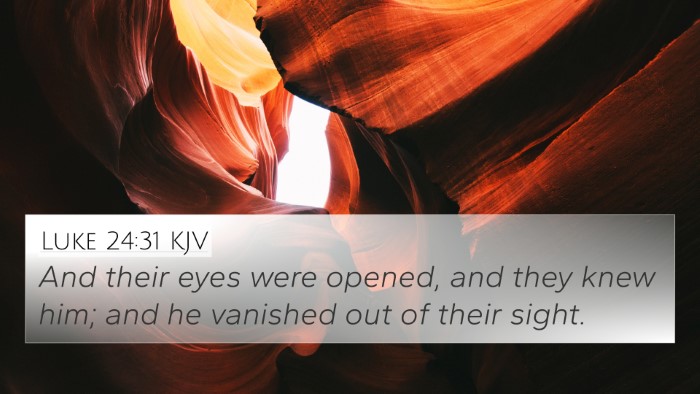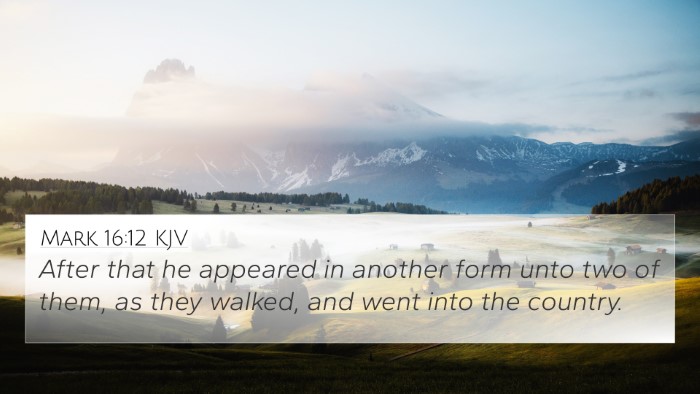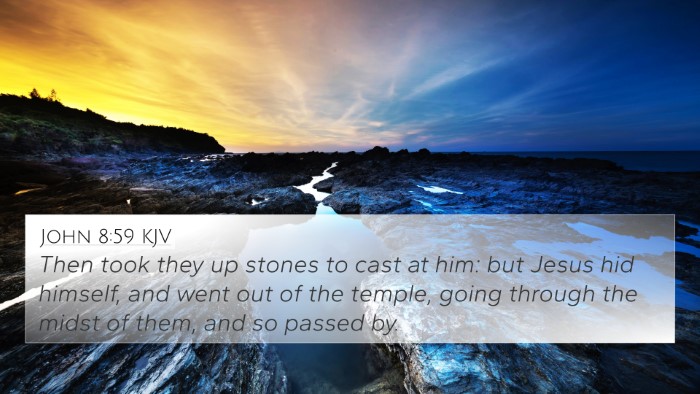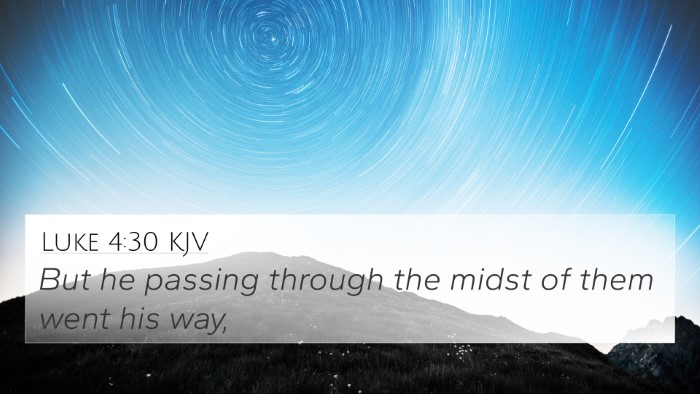Understanding John 20:14
John 20:14 states: "When she had said this, she turned around and saw Jesus standing, but she did not know that it was Jesus." This verse is significant in the context of Mary Magdalene's encounter with the risen Christ, marking a pivotal moment in the Resurrection narrative.
Summary of John 20:14
This verse occurs in the account of Mary Magdalene visiting the tomb of Jesus. After finding it empty, she converses with angels and is overcome with grief. The moment documented in this verse highlights a profound spiritual truth—recognition and understanding are often clouded by emotional distress.
Commentary Insights
-
Matthew Henry:
Matthew Henry emphasizes that Mary’s inability to recognize Jesus is symbolic of spiritual blindness. Even when faced with the truth, external circumstances can obstruct one’s perception of spiritual realities. This speaks to the theme of revelation, where true understanding requires divine intervention.
-
Albert Barnes:
Barnes notes that the resurrection of Jesus is not just a historical event but a transformative encounter. Mary’s experience serves to illustrate how personal grief can blind individuals to hope. The mention that she 'did not know' Jesus highlights the necessity for faith in recognizing divine presence, especially in times of despair.
-
Adam Clarke:
Adam Clarke focuses on the disciples' understanding of the resurrection. His commentary suggests that Mary’s encounter symbolizes the gradual process of coming to faith and understanding. Clarke posits that this moment serves as a prelude to the greater revelation of Christ as the Messiah and the implications of His resurrection for humanity.
Bible Verse Cross-References
- Matthew 28:9: "And as they went to tell his disciples, behold, Jesus met them, saying, All hail. And they came and held him by the feet, and worshipped him." - This verse highlights the recognition of Jesus by His followers.
- Luke 24:16: "But their eyes were holden that they should not know him." - This verse parallels Mary’s experience, emphasizing the theme of divine blindness.
- John 10:14: "I am the good shepherd, and know my sheep, and am known of mine." - Here, the intimate recognition between Christ and His followers is underscored.
- John 21:4: "But when the morning was now come, Jesus stood on the shore: but the disciples knew not that it was Jesus." - Illustrates the recurring theme of not recognizing Jesus in various post-resurrection appearances.
- Isaiah 43:1: "Fear not: for I have redeemed thee, I have called thee by thy name; thou art mine." - This speaks to the personal relationship believers have with Jesus, similar to Mary Magdalene.
- 1 Corinthians 15:5: "And that he was seen of Cephas, then of the twelve." - Affirms the appearances of the risen Christ as significant for establishing faith.
- John 20:13: "And they say unto her, Woman, why weepest thou? She saith unto them, Because they have taken away my Lord, and I know not where they have laid him." - Offers context for Mary’s grief prior to her recognition of Jesus.
Connections between Bible Verses
In exploring the thematic connections of John 20:14, we can observe several pertinent themes:
- Recognition of Christ: The inability of Mary to recognize Jesus mirrors other accounts in the Gospels, such as the disciples on the road to Emmaus.
- The Role of Emotion in Faith: Mary’s grief showcases how emotional states can affect spiritual perception, an idea echoed in various biblical accounts of distress leading to clarification of God’s will.
- Revelation through Encounter: The significance of personal encounters with Christ in the New Testament highlights how understanding often follows a physical encounter with the divine.
- Resurrection as a Theme: The focus on the resurrection in this verse ties into the larger narrative of the New Testament, emphasizing the transformative power of Christ’s resurrection.
Thematic Bible Verse Connections
Delving into broader biblical themes, John 20:14 provides a link to many doctrines, including:
- The resurrection of Christ (1 Peter 1:3).
- The calling of believers (John 15:16).
- The profound personal relationship believers have with Christ (Philippians 3:10).
- Transformation through encounters with Jesus (Romans 12:2).
- The importance of faith over sight (2 Corinthians 5:7).
Using Bible Cross-References
Understanding the connection between John 20:14 and other scriptures enhances one’s study. Here are some tools and tips to engage in Bible cross-referencing:
- Bible Concordance: A tool to locate verses based on keywords for thematic study.
- Cross-reference Bible study guides: These guides can lead to deeper understanding and thematic connections between verses.
- How to use Bible cross-references: Utilize footnotes or margin references in Bibles that provide immediate connections.
- Bible reference resources: Online platforms or physical books that offer insights into thematic connections can enrich personal study.
Conclusion
John 20:14 offers profound insights into the nature of recognition, grief, and spiritual awakening. By cross-referencing it with other scriptures, one can gain a deeper understanding of the resurrection's significance and the personal journeys of faith represented in the Gospels. Engaging in comparative Bible verse analysis and utilizing various biblical study tools can enrich one's exploration of scripture and its many themes.
